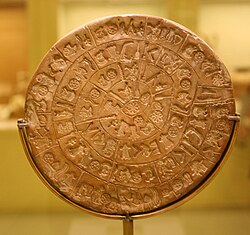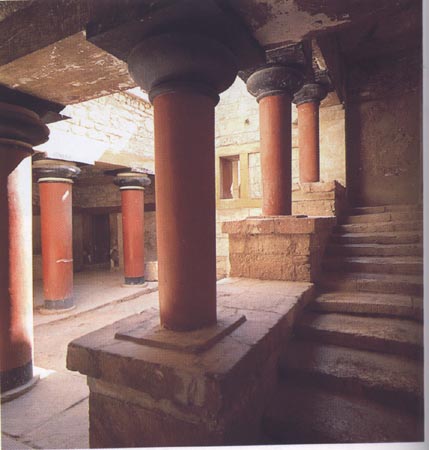Danube Valley, the prime location of "Old European" Civilization


A fun fact: The Danube River is the largest river in Europe and cuts through the subcontinent from Germany to the Black Sea, similar to the Zora's River cutting through Hyrule to Lake Hylia (which in proportion to Hyrule, is about the same size as the Black Sea is to Europe).Before the glory that was Greece and Rome, even before the first cities of Mesopotamia or temples along the Nile, there lived in the Lower Danube Valley and the Balkan foothills people who were ahead of their time in art, technology and long-distance trade.
For 1,500 years, starting earlier than 5000 B.C., they farmed and built sizable towns, a few with as many as 2,000 dwellings. They mastered large-scale copper smelting, the new technology of the age. Their graves held an impressive array of exquisite headdresses and necklaces and, in one cemetery, the earliest major assemblage of gold artifacts to be found anywhere in the world.
The striking designs of their pottery speak of the refinement of the culture’s visual language. Until recent discoveries, the most intriguing artifacts were the ubiquitous terracotta “goddess” figurines, originally interpreted as evidence of the spiritual and political power of women in society.
New research, archaeologists and historians say, has broadened understanding of this long overlooked culture, which seemed to have approached the threshold of “civilization” status. Writing had yet to be invented, and so no one knows what the people called themselves. To some scholars, the people and the region are simply Old Europe.
The little-known culture is being rescued from obscurity in an exhibition, “The Lost World of Old Europe: the Danube Valley, 5000-3500 B.C.,” which opened last month at the Institute for the Study of the Ancient World at New York University. More than 250 artifacts from museums in Bulgaria, Moldova and Romania are on display for the first time in the United States. The show will run through April 25.
At its peak, around 4500 B.C., said David W. Anthony, the exhibition’s guest curator, “Old Europe was among the most sophisticated and technologically advanced places in the world” and was developing “many of the political, technological and ideological signs of civilization.”
Dr. Anthony is a professor of anthropology at Hartwick College in Oneonta, N.Y., and author of “The Horse, the Wheel, and Language: How Bronze-Age Riders from the Eurasian Steppes Shaped the Modern World.” Historians suggest that the arrival in southeastern Europe of people from the steppes may have contributed to the collapse of the Old Europe culture by 3500 B.C.
At the exhibition preview, Roger S. Bagnall, director of the institute, confessed that until now “a great many archaeologists had not heard of these Old Europe cultures.” Admiring the colorful ceramics, Dr. Bagnall, a specialist in Egyptian archaeology, remarked that at the time “Egyptians were certainly not making pottery like this.”
A show catalog, published by Princeton University Press, is the first compendium in English of research on Old Europe discoveries. The book, edited by Dr. Anthony, with Jennifer Y. Chi, the institute’s associate director for exhibitions, includes essays by experts from Britain, France, Germany, the United States and the countries where the culture existed.
Dr. Chi said the exhibition reflected the institute’s interest in studying the relationships of well-known cultures and the “underappreciated ones.”
Although excavations over the last century uncovered traces of ancient settlements and the goddess figurines, it was not until local archaeologists in 1972 discovered a large fifth-millennium B.C. cemetery at Varna, Bulgaria, that they began to suspect these were not poor people living in unstructured egalitarian societies. Even then, confined in cold war isolation behind the Iron Curtain, Bulgarians and Romanians were unable to spread their knowledge to the West.
The story now emerging is of pioneer farmers after about 6200 B.C. moving north into Old Europe from Greece and Macedonia, bringing wheat and barley seeds and domesticated cattle and sheep. They established colonies along the Black Sea and in the river plains and hills, and these evolved into related but somewhat distinct cultures, archaeologists have learned. The settlements maintained close contact through networks of trade in copper and gold and also shared patterns of ceramics.
The Spondylus shell from the Aegean Sea was a special item of trade. Perhaps the shells, used in pendants and bracelets, were symbols of their Aegean ancestors. Other scholars view such long-distance acquisitions as being motivated in part by ideology in which goods are not commodities in the modern sense but rather “valuables,” symbols of status and recognition.
Noting the diffusion of these shells at this time, Michel Louis Seferiades, an anthropologist at the National Center for Scientific Research in France, suspects “the objects were part of a halo of mysteries, an ensemble of beliefs and myths.”













